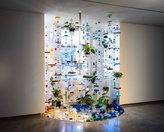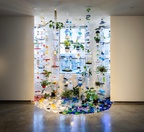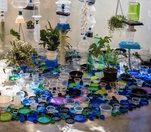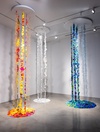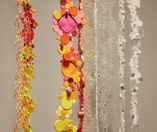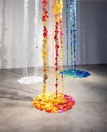Lauren Berkowitz
Wurundjeri/Boon Wurrung Country, Narrm (Melbourne)
2021
Displayed 2021 at Museum of Contemporary Art Australia
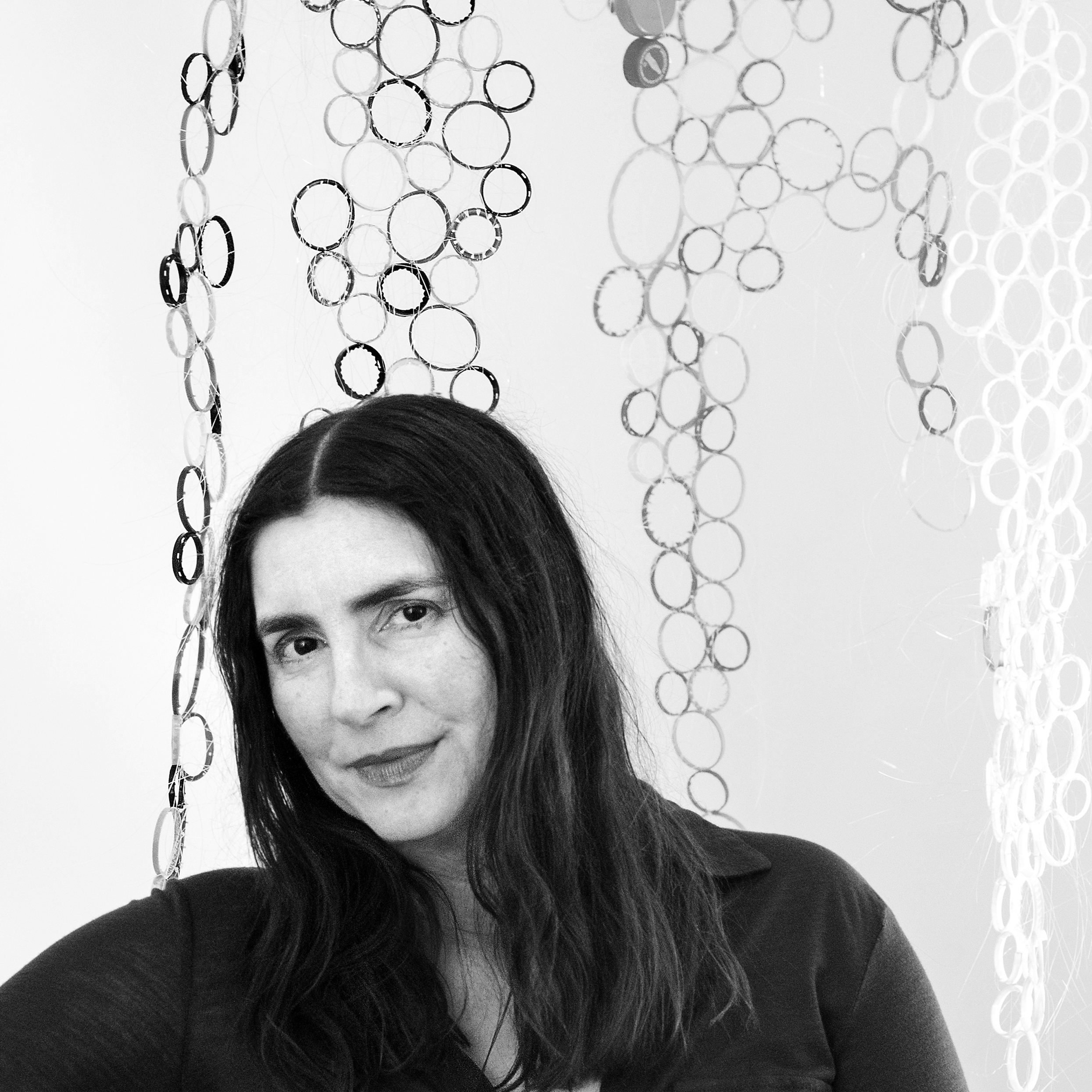
Lauren Berkowitz
Born 1965, Wurundjeri/Boon Wurrung Country, Narrm (Melbourne). Lives and works on Wurundjeri/Boon Wurrung Country, Narrm (Melbourne)
Lauren Berkowitz creates ephemeral and site-specific installations that evoke the passage of time, loss and renewal. Her work explores the poetic resonance of natural and man-made materials and their transformative qualities through light, volume and space. Often inspired by the landscape but disquieted by its precarious state, she recycles narratives and residual matter as a process of environmental regeneration. Berkowitz’s work is held in major national and international collections. Between 2018 and 2019 she undertook residencies in New York, at the International Studio and Curatorial Program and Residency Unlimited, which led to the creation of her work featured in The National 2021.
Photograph: Kirstin Gollings
Image courtesy and © the artist
Artist text
by Lucy Latella, with Lauren Berkowitz
The Zohar, a classic Kabbalistic text of Jewish mysticism, describes the dynamic creation of the world and everything in it. (1) All inanimate and organic matter in existence is linked like a chain, interwoven and interconnected. Also known as the Book of Radiance, the text is filled with fantastical visions of illuminated vessels and cascading rivers of colourful light that ascend and descend. Its language of growth, germination and abundance expresses an infinite pooling and expansion of forms. The emanating light is the source of life, constantly flowing and renewing itself, and bringing vitality to all things.
In Kabbalah, the structure of reality is represented by concentric geometric diagrams. These layered, interconnecting circles are, for artist Lauren Berkowitz, reminiscent of atoms, DNA strands, or planets, suns and solar systems, from which life is formed and sustained.
Berkowitz’s installations in The National 2021 are steeped in the imagery of these multi-layered narratives, and dominated by circular forms. Fragile Ecologies (2020–21) comprises three suspended constellations, five-metres high, of plastic lids and rings delicately bound together with nylon thread. Colour fields of saturated blues, purples, greens, reds, oranges and whites distinguish the columns, each pouring down into an overflow of plastic lids at their base. These vibrant combinations relate to the four elements of fire, earth, air and water. They echo, too, the seasonal rhythms of the natural world and the fragile co-dependencies within our ecosystems.
In Plastic Topographies (2020–21), installed by the eastern windows of the gallery, these colour shifts are more subtle. Berkowitz conjoins lids, rings and takeaway containers into pillars above a sprawling ground cover – or topography – of plastics. Zohar imagery is recalled again here, with regenerative circular forms, voids, links, cells and vessels illuminated and animated by natural light, and punctuated throughout by the artist’s seeding of life-giving plants.
In contrast to the harmonious cosmogony of the Zohar, the abundance of single-use plastic in these works also portrays a cautionary microcosm of planetary decay. By-products of mass production and consumerism, the components seem to multiply and morph into surreal dystopian landscapes; and the polymer chains that bind each ‘ephemera’ are lasting.
Acts of salvaging, recycling and rehabilitating found materials have been central to Berkowitz’s practice over the past three decades. They draw from her personal interest in the Jewish philosophy of Tikkun Olam: humanity’s responsibility to repair the world through good deeds and small gestures. As Berkowitz notes:
At times, this allows me to act as a caretaker, tidying littered sites. Both artworks represent a culmination of the repetitive consumption of consumer products … Over a two-year period, family, friends and staff at the Museum of Contemporary Art Australia retrieved plastic from their homes while community networks gleaned waste from degraded landscapes, waterways and beaches, contributing to the artwork. These activities worked to restore balance to ecosystems, highlighting our individual and collective obligation to heal our damaged world.
Berkowitz’s hybrid works are situated between the ‘natural’ and the ‘man-made’. She presents two opposing realms – flourishing life and planetary pollution – to emphasise our precarious reality in the centre. Their tenuous structures reflect the strained co-dependency of nature and humankind for survival.
(1) Written by Moses de León in the 13th century, the Zohar is considered the foundational Kabbalistic text of Jewish mystical thought.
The artist thanks the MCA -Rachel Kent, Lucy Latella, Shinae Stowe, Natasha Frisch, Aimee Sharpe, Luke Turner, Casey Ayres, Szymon Dorabialski, Sharon Krum , Nathan Wolski, Charis Atlas, Nicole Cullen, Jeff Harrison, Eva Migdal, Shira Levine, Buy nothing group St Kilda, CleanUpAustralia, BeachPatrol, Phillippa’s, Lisa Kalman, Rosa Ellen Emily Krum, Josh Krum, Carolyn Fels, Bronwen Coleman, Dany Merkel, Penny Michelson, Tanya Melville, Fiona Brockhoff, Dominique De Maurier, Linda Engle, Judy Tauber, Giddy Ifergan, Sandra Herbert , Hedy Ritterman, Karen Wolton, Kate Worth, Noel Hamilton, Rox de Luca, Simeon Kronenberg, Hilarie Mais, Alexie Glass- Kantor, Jack Tarlinton, Elyse Goldfinch, Australia Council, International Studio and Curatorial Program, NY, Residency Unlimited, NY, Nathalie Angles, Gregory Volk, Julie Horne Moller, Svetlana Bailey, Belle Bassin, Carolina Falkholt and Paula Dunlop.

